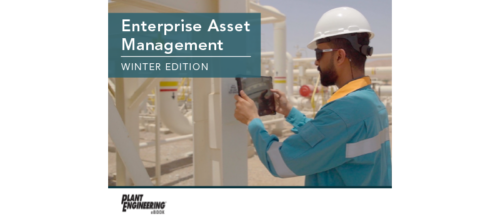Asset Conditioning Monitoring: Best Practices to Maximize Benefits: Your questions answered
Webcast presenter Shreeram Shanbhag answered additional questions about topics such as digital twins, asset maintenance strategy tips, data storage, and more.
On March 26, Plant Engineering presented the webcast “Asset Conditioning Monitoring: Best Practices to Maximize Benefits,” sponsored by L&T Technology Services, on using data to better understand asset health. Shreeram Shanbhag, Technical Expert & Head, (Manufacturing Operations Management), L&T Technical Services, presented the webcast; the archived presentation can be found here. Webcast attendees had more questions on the topic than could be responded to during the presentation; Shanbhag has responded to those questions here:
Q: How do we arrive at our asset maintenance strategy?
Shanbhag: Based on the objectives of the manufacturing strategy, sourcing strategy and the digital/IT strategy, an asset charter can be arrived at. Once the asset lifecycle is evaluated, as part of this life cycle, the Asset Maintenance strategy can be formulated.
An asset management strategy should include such questions as:
- Which assets?
- Where are they located?
- What is their behavior?
- What is their as-is condition?
- How do I operate and maintain them properly?
- How do I maximize asset reliability for each asset?
- How do I sustain this strategy by using the relevant analytics?
Q: Is the data stored somewhere even if we don’t actively monitor for it?
Shanbhag: Yes. Data can be planned to be stored for a certain period of time. Before jumping on to build large data marts, it is prudent to assess and arrive at an optimal data storage plan (with due expiry for historical data) for the future efficacy of it.
Q: Do you use digital twins to simulate and troubleshoot remote assets?
Shanbhag: Not yet in a practical way for a direct customer need. But yes, it is possible to use digital twins for asset performance management, as long as the relevant data of remote assets is available in real time to sustain the twinning.
Q: How customizable are the analytics? Are they built in during the initial installation and then fixed or can they be queried if we want to parse them differently?
Shanbhag: Analytics can be configured and developed for specified use cases and also keeping in mind the future needs. They can be deployed with a range of flexibility based the various field scenarios. Querying and parsing is possible and is a basic feature in any analytics deployment.
Q: What main challenges do you foresee when dealing with legacy equipment? Is there a tipping point when upgrading to newer technologies makes more sense? (e.g. old plc models). The ROI is clear, but is there a rule of thumb to ease the analysis?
Shanbhag: The main challenge with legacy equipment is to find a safe and reliable way to connect to the equipment to obtain all relevant data out from them in real time.
We facilitate our customers in making the vital decision between upgrade versus replace. There is no general rule of thumb but we do have tools, templates and checklists to arrive at quick decisions in this regard.
Q: How digital technology will help to do intangible assets management?
Shanbhag: Management of intangible assets such as brands, patents, trademarks, copyrights, knowledge-base etc. is a different area. However, digital technology is all pervasive in the world now and definitely can be leveraged to manage the intangible assets.
Q: With regards to the implementation model in achieving successful asset management, any suggestion how many members should be in the team?
Shanbhag: The team size for an implementation shall depend on various factors, such as your overall plan, timeline commitments, roles needed, skills required, onsite and offsite presence and others. During the life cycle of an implementation, the team will be ramped-up and down per the project requirement.
Do you have experience and expertise with the topics mentioned in this content? You should consider contributing to our CFE Media editorial team and getting the recognition you and your company deserve. Click here to start this process.



